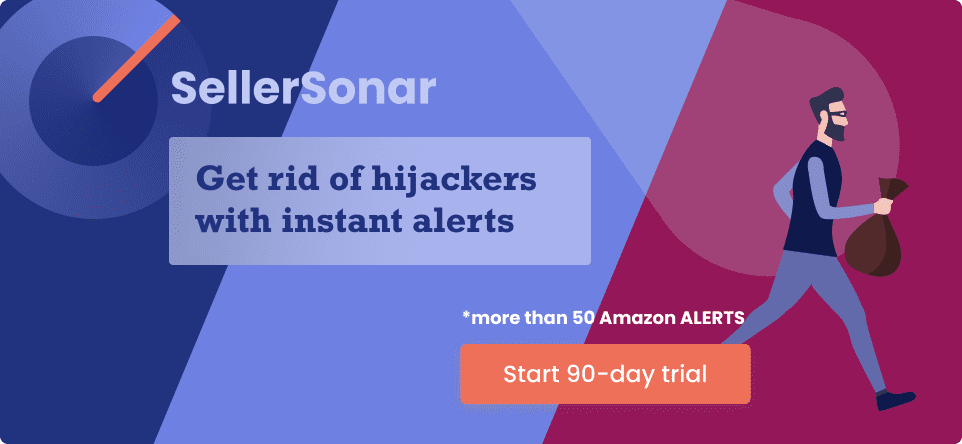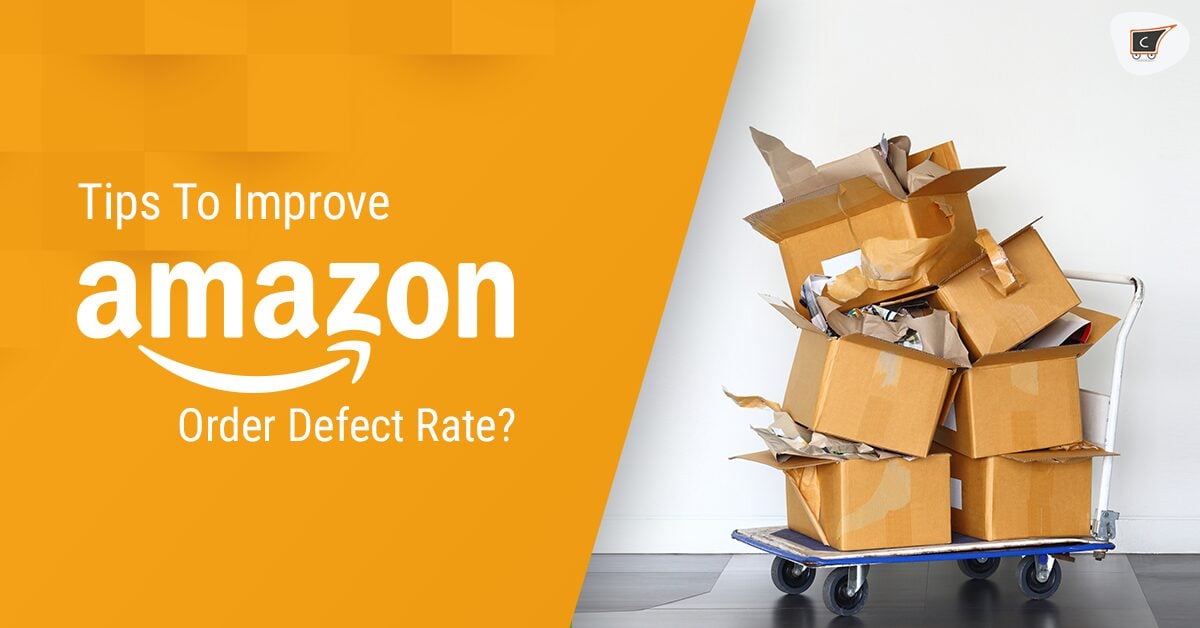Table of Contents
 There are many important metrics and indicators to keep an eye on to run an Amazon store successfully. Order defect rate Amazon is one of them. This is an important indicator to measure the customer experience you deliver. So let’s find out how Amazon calculates the order defect rate and how to improve it.
There are many important metrics and indicators to keep an eye on to run an Amazon store successfully. Order defect rate Amazon is one of them. This is an important indicator to measure the customer experience you deliver. So let’s find out how Amazon calculates the order defect rate and how to improve it.
What Is Amazon’s Order Defect Rate?
An Amazon order defect rate is the indicator that, as the name suggests, points out the number of defective orders your buyers complain about. This indicator is driven by customer feedback, so feedback management is the primary step to avoid an Amazon ODR warning and improve your order defect.
How to Find Your Amazon Order Defect Rate
When does the order defect rate begin on Amazon? It started when Amazon realized that not all sellers offer the product of excellent quality and can meet their obligations for the shipment and overall customer experience. So what factors contribute to the order defect rate on Amazon?

To put it simply, Amazon ODR is a figure calculated by dividing the number of the orders the customers have complained about by the total number of your orders that aren’t fulfilled by Amazon. Here is what the marketplace takes into account when coming up with an Amazon order defect rate report.
- Negative feedback rate. The negative feedback your buyers share largely affects your Amazon order defect. While you can’t completely avoid it and satisfy everyone, make sure to resolve negative issues as quickly as possible.
- Credit card chargeback. A chargeback rate is a never-ending headache for Amazon sellers. They not only affect reputation but also promise additional expenses and influence ODR Amazon.
- Guarantee claims. A to Z guarantee claims also affect order defect rate (ODR). This is a guarantee provided by Amazon itself. According to its condition, the buyers can receive a refund directly from Amazon if they cannot solve the issue with the third-party seller.

How to Monitor and Improve Your ODR?
One of the ways to monitor your ODR on Amazon is to use Channel Advisor – a cloud-based solution for eCommerce marketing and brand analytics. To do it, choose the Sell section, then switch to Amazon Marketplace and find out your ODR as a part of your account health status report. You can also monitor your ODR for the past 12 months, in percentage and value.
Here is a simple plan of action to improve your ODR.
- Revise your product quality. Most complaints Amazon sellers receive are complaints of product quality. If this is the relevant problem for your store, find a way to improve it or change the supplier to offer your customers better items without the risk of reaching high ODR.
- Make your product description clear. Many complaints and chargebacks are provoked by the expectation vs. reality mismatch the buyers face when getting your product delivered. Don’t misguide them with vague or “too nice” product descriptions. It is always better to call a spade a spade than resolving negative feedback and restoring your reputation.
- Manage your customer feedback more intelligently. As we’ve stated, your customers’ reviews are the most important factors that may decrease or increase your order defect rate. So, stay tuned into the insights your users share. They are valuable for improving your product quality and keeping your ODR at the lowest level possible.
Components of ODR
The Order Defect Rate (ODR) is composed of three main elements: the Negative Feedback Rate, the A-to-Z Guarantee Claim Rate, and the Chargeback Rate. Each of these components plays a significant role in determining your overall ODR percentage.
Negative Feedback Rate
The Negative Feedback Rate is the percentage of orders that receive negative feedback from customers. Negative feedback can include poor product reviews, complaints about customer service, or dissatisfaction with the shipping process. This rate is important because it directly reflects customer satisfaction and impacts your seller rating.
A-to-Z Guarantee Claim Rate
The A-to-Z Guarantee Claim Rate is the percentage of orders for which customers file A-to-Z Guarantee claims. These claims occur when a buyer feels that the product did not arrive as expected or if there was an issue that the seller did not resolve satisfactorily. High A-to-Z Guarantee Claim Rates can lead to account suspension or removal from the marketplace.
Chargeback Rate
The Chargeback Rate is the percentage of orders that result in chargebacks, typically due to disputes related to payment processing or fraudulent transactions. Maintaining a low chargeback rate is essential for keeping a good standing with Amazon and credit card processors.
What If Your ODR Is Higher Than 1%?
The perfect ODR Amazon appeal is 1%. This is an acceptable norm you should strive for. Still, if a defective order rate goes beyond this figure, you can expect three different scenarios.
- Getting an Amazon ODR warning. In this way, Amazon kindly hints that you are better to revise your approach to customer service and improve your order defect rate as soon as possible.
- Losing the Buy Box. Suppose you aren’t using Amazon FBA and fulfill orders on your own. In that case, you can lose the Buy Box if you have many negative reviews, which directly affect the order defect rate on Amazon.
- Getting an Amazon order defect rate suspension. This is an extreme measure Amazon applies to those sellers whose ODR is high.
How long do you have to correct the Amazon order defect rate? It takes a month for Amazon to calculate it, so do your best during the next month to improve it. And here is how.
Strategies to Enhance ODR
Enhancing your Order Defect Rate (ODR) requires implementing best practices across various facets of your business operations. Here are some comprehensive strategies to help you maintain a low ODR:
Provide Precise Product Descriptions
Accurate and detailed product listings are crucial in minimizing negative feedback and A-to-Z Guarantee claims. Include high-quality images, thorough descriptions, and precise specifications to set appropriate customer expectations. Utilize multiple photos from different angles and incorporate customer reviews to offer a real-world perspective of the product. This transparency fosters trust and reduces the risk of dissatisfaction.
Ensure Quality Packaging and Shipping
Investing in quality packaging materials ensures product protection during transit, while choosing reliable shipping carriers guarantees timely and safe delivery. Poor packaging and delayed shipping are common sources of negative feedback and returns. Additionally, consider using eco-friendly packaging options to appeal to environmentally conscious customers. Monitoring the delivery process through tracking systems can help anticipate and address shipping issues before they affect customer satisfaction.
Respond Promptly to Customer Inquiries
Effective and timely communication with customers can prevent potential issues from escalating into negative reviews or claims. Utilize Amazon’s email automation tools to promptly engage and assist buyers, ensuring their concerns are swiftly addressed. Implementing a customer service strategy that includes 24/7 support and multilingual assistance can further enhance the shopping experience. Providing detailed FAQs and a help center on your website can also enable self-service for customers, reducing the volume of inquiries.
Handle Returns and Refunds Efficiently
Streamline your return and refund processes to manage customer complaints efficiently. Offering hassle-free returns and prompt refunds can turn a potentially negative experience into a positive one, reducing the likelihood of negative feedback. Consider implementing a generous return policy and clearly communicate the return process steps. Training your customer service team to handle returns empathetically and effectively can further enhance customer satisfaction. Keep track of return reasons to identify and address recurring issues, thereby minimizing future returns.
Conclusion
To manage your users’ feedback as effectively as possible, consider using a dedicated application, for example, SageMailer. With the help of SageMailer, you can send kind requests to your customers to leave a review, plus instantly manage negative feedback that directly affects your order defect rate. This is a robust reputation management app that you can use to keep your ODR low and create a stream of sales and conversions because of the power of social proof.
Get started right now and take advantage of our 30-days free trial! Make sure SageMailer actually helps!

